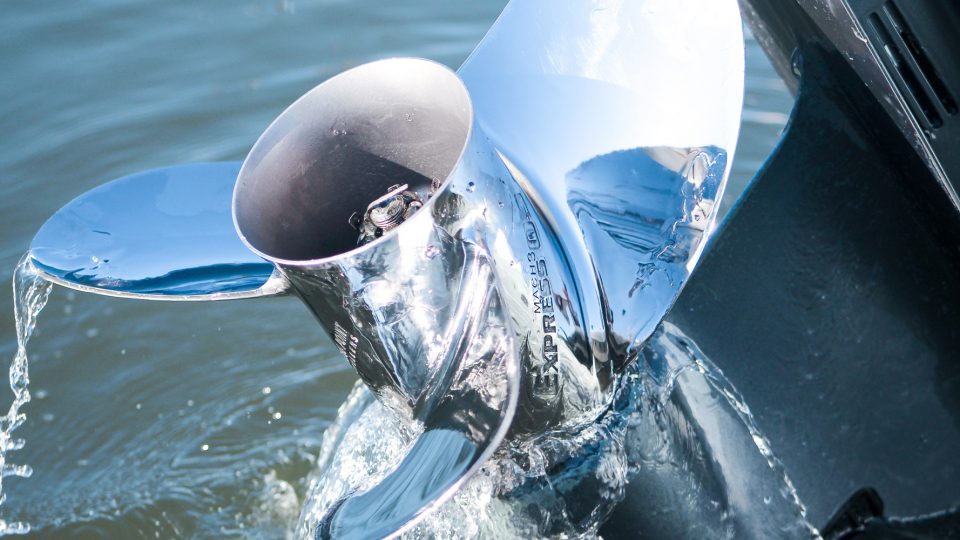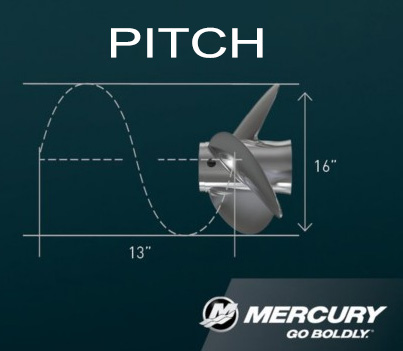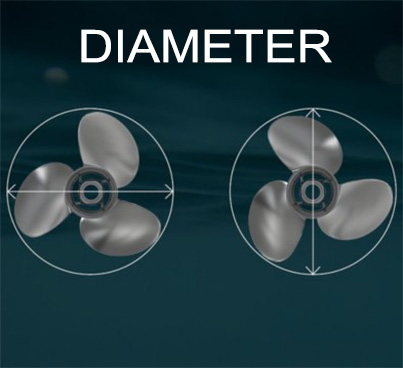Ahoy, fellow mariners! Simon Higham here, your seasoned sea guide from Bill Higham Marine, ready to steer you through the swirling currents of choosing the perfect propeller for your vessel. The propeller, often dubbed the ‘wheels of your boat,’ plays a pivotal role in your vessel’s performance, efficiency, and overall seafaring satisfaction. So, let’s dive into the art and science of selecting the ideal prop for your boat and outboard combo, shall we?
Understanding Propeller Basics: Diameter and Pitch
Before we set sail, let’s get our sea legs steady on some fundamental terms. The ‘diameter’ of a propeller refers to the circle encompassed by the blade tips. Think of it as the width of your prop’s ‘footprint’ in the water. On the other hand, ‘pitch’ is the theoretical distance a propeller moves forward in one revolution. Imagine it as the stride length of a giant striding through the sea. The right combination of diameter and pitch will ensure that your vessel is not just moving, but cruising efficiently through the waves.
The Tale of Blades: Three vs. Four
Now, onto the heart of the matter: the number of blades. The classic three-blade propeller is the Jack Sparrow of the sea – versatile, reliable, and excellent for a wide range of applications. It offers a balanced mix of speed, efficiency, and handling. Ideal for those who fancy a bit of everything – from leisurely cruises to a spot of fishing.
Enter the four-blade propeller, the sophisticated cousin. With an extra blade in the water, it provides increased surface area, leading to better acceleration, lift, and load-carrying capacity. This is your go-to if you’re laden with heavy cargo or if your adventures include water sports where that extra ‘oomph’ for quick starts is paramount.
Tailoring Your Choice: The Role of Use and Application
Choosing the right propeller isn’t just about counting blades; it’s about understanding your seafaring script. Are you the leisurely cruiser, the angler seeking serene spots, or the thrill-seeker chasing the wake? Your type of use significantly influences the pitch and diameter selection.
A higher pitch propeller might be your ally if speed is the name of your game, allowing you to cover more water in less time. But beware, too high a pitch, and you might find your engine laboring, like a weary sailor, unable to reach its proper song (RPM). Conversely, a lower pitch offers quicker acceleration, akin to a spirited sprinter off the blocks, perfect for towing sports or heavy loads but at the expense of top-end speed.
Diameter plays its part too, with larger diameters offering more thrust and power, ideal for heavy vessels or those carrying precious cargo (family and friends included!). Smaller diameters lend themselves to lighter boats, slicing through the water with the grace of a dancer.

Here are three typical use cases with the correct prop solution so you can get a taste of what’s right:
1. 18ft Speed Boat for Skiing and Wakeboarding with a 100HP 4-Stroke Engine
Use Case: This setup demands quick acceleration and the ability to maintain lower speeds at higher power for wake generation, crucial for skiing and wakeboarding.
Correct Prop Choice: A four-blade propeller is ideal for this application. The extra blade provides better acceleration and thrust, which is essential for quick starts and maintaining steady speeds for wakeboarding and skiing. A propeller with a slightly lower pitch will also help in achieving quicker acceleration. A pitch in the range of 15-17 inches would be suitable, depending on the boat’s specific weight and typical load.
2. 16ft Planing Hull Fishing Boat with a 60HP Mercury 4-Stroke Engine
Use Case: Fishing boats require good top-end speed for reaching fishing spots quickly but also need stability and maneuverability at lower speeds for trolling.
Correct Prop Choice: A three-blade propeller with a medium pitch is generally a good fit for this scenario. It offers a balance between top speed and acceleration. A propeller pitch around 13-14 inches, depending on the weight and the most common load of the boat, would provide a good balance between speed and fuel efficiency. The three-blade design will also ensure better handling at varied speeds, which is beneficial for maneuvering in different fishing conditions.
3. 25ft Sailing Boat with a 6HP Tohatsu 4-Stroke Engine
Use Case: Sailing boats primarily rely on wind power, but the auxiliary engine is crucial for docking, maneuvering in tight spots, or when there’s no wind. The emphasis here is on smooth, efficient power at low speeds rather than on rapid acceleration or top speed.
Correct Prop Choice: A high-thrust, three-blade propeller with a larger diameter and lower pitch is recommended for this use case. The increased diameter and reduced pitch will provide more power at lower speeds, which is ideal for maneuvering and docking. A propeller pitch around 6-7 inches would be suitable, ensuring that the engine can run within its recommended RPM range without overloading.
The Voyage Ahead
Embarking on the journey to find the perfect propeller is akin to charting a course to unknown lands – it requires preparation, understanding, and a bit of intuition. At Bill Higham Marine, we don’t just sell propellers; we help you navigate the vast options to ensure your vessel is equipped with the perfect companion for your maritime adventures.
So, before you set sail next, drop by or give us a shout. Let’s ensure your vessel is not just afloat but sailing smoothly and efficiently, ready to tackle whatever the vast blue yonder throws its way. Fair winds and following seas, my friends!


